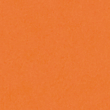The Psychology of Color
- By Andrew Jacobs
- Sep 15, 2015
The Psychology of Color:
Have you ever notice how your surroundings can affect your emotions and state of mind? Are there certain places that feel calm and peaceful ? Have you been somewhere that bothers and strains your eyes? Did you ever think it was the color in the spaces that made you feel that way? Color choices can convey a feeling, express parts of your personality, make a statement, or change your attitude!
Think about painting a room in your house: what emotion do you want to feel walking in. A red bedroom is harsh on the eyes and not inviting but perfect for a restaurant logo to spark appetite. Blue is great for an office and productivity but might not be the ideal choice if you are trying to grab attention with a store sign or create a call to action. Color choice matters!
SHOP every color here!
Warm Colors:
Warm colors are often used in designs to reflect warmth creativity, passion, energy and creating an exciting effect. They reflect more light and excessively stimulate a person’s eyes which can lead to irritation. They are also used to encourage appetite.
Cool Colors:
Cool colors are sued to reflect professionalism and calmness or a sense of restfulness for the viewer.
Neutral Colors:
Neutral colors are great to mix with either warm or cool palettes. Many times they are used for backgrounds of designs and can tone down using other bold colors. Black is added to create a darker shade while white can be added to create a lighter tint.
Some Color Vocabulary:
Primary Colors:
Primary colors are red, yellow, and blue. These can not be mixed or formed by any combination of other colors. Additionally, all other colors are created by mixing these three colors.
Secondary Colors:
Secondary colors are green, orange and purple. You can create a secondary color by mixing 2 primary colors.
Tertiary Colors:
Tertiary colors: red-orange, yellow-orange, yellow-green, blue-green, blue-violet, and red-violet. Tertiary colors are formed by mixing primary and secondary colors.
Happy coloring!
The Psychology of Color: Understanding the Impact of Color on Human Behavior
Color psychology is the study of how different colors can affect human emotions, behavior, and decision-making. It explores the psychological effects of colors and how they can influence perceptions and reactions. Understanding the psychology of color is crucial for businesses, marketers, and designers as it can be used to evoke specific emotions and create a desired response from consumers. For example, red is often associated with passion and excitement, while blue is linked to trust and reliability. By incorporating this knowledge into branding, advertising, and product design, companies can strategically influence consumer behavior and improve their overall success.
The Impact of Color on Consumer Behavior
Color plays a significant role in consumer behavior and purchasing decisions. Research has shown that up to 90% of snap judgments made about products can be based on color alone. Different colors can evoke different emotions and perceptions, influencing how consumers perceive a brand or product. For example, warm colors like red and orange can create a sense of urgency and impulse, while cool colors like blue and green can promote a feeling of calm and trust. Understanding the impact of color on consumer behavior can help businesses create effective marketing strategies and improve their overall sales and customer engagement.
Utilizing Color Psychology in Marketing and Branding
Color psychology is widely used in marketing and branding to create a strong and memorable brand identity. By strategically choosing colors that align with the brand's values and target audience, businesses can evoke specific emotions and associations. For example, fast-food chains often use red and yellow to stimulate appetite and create a sense of urgency, while luxury brands use black and gold to convey sophistication and exclusivity. Understanding how to utilize color psychology in marketing and branding can help businesses create a strong and impactful visual identity that resonates with their target audience.
Choosing the Right Colors for Different Use Cases
When it comes to design and branding, it's essential to choose the right colors for different use cases. For example, the color scheme for a healthcare brand should evoke feelings of trust and reliability, while a children's toy brand may opt for bright and playful colors to appeal to their target audience. Understanding the appropriate use of colors in different contexts can help businesses create designs that effectively communicate their intended message and resonate with their audience.
Alternatives to Traditional Color Associations
While traditional color associations exist, it's essential to recognize that cultural and individual differences can influence how colors are perceived. For example, while white is often associated with purity and cleanliness in Western cultures, it can symbolize mourning in some Eastern cultures. It's crucial for businesses to consider these variations when creating global marketing campaigns or targeting diverse audiences to ensure their use of color is culturally sensitive and effective.
Tips for Using Color Psychology in Design and Marketing
When incorporating color psychology into design and marketing, it's essential to consider the context, audience, and intended message. Conducting thorough research on the target audience's preferences and cultural associations with colors can help businesses make informed decisions. Additionally, A/B testing different color schemes and analyzing the impact on consumer behavior can provide valuable insights for optimizing marketing strategies. By staying informed about the latest trends and research in color psychology, businesses can continue to refine their use of color to effectively influence consumer behavior and perceptions.

















